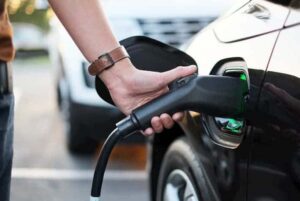The Bureau of Indian Standards (BIS) has approved the country’s first ever indigenously developed AC and DC Combined Charging connector standard for light electric vehicles (LEVs), IS17017 (Part 2 / Sec 7): 2023.
 This is also the world’s first-ever combined AC and DC charging connector standard for light electric vehicles and is designed and engineered in India, which can become the benchmark globally for LEVs.
This is also the world’s first-ever combined AC and DC charging connector standard for light electric vehicles and is designed and engineered in India, which can become the benchmark globally for LEVs.
In a first-of-its-kind initiative, NITI Aayog, the Department of Science and Technology, ARAI, EV makers, and the Bureau of Indian Standards came together to develop a national standard.
This standard will help create an open ecosystem, which will drive faster EV adoption across the globe. This allows OEMs to move away from relying solely on international standards and protocols and instead implement a charging system that will propel Indian innovation ahead.
This standard addresses a large gap that existed in the market for a standardized connector for an AC and DC combined charging system for light electric vehicles (2-wheelers, 3-wheelers, and microcars). Light electric vehicle charging requirements are unique, as the high cost and large size of a 4W charging connector make it infeasible to adopt a four-wheeler charging connector.
A combined AC and DC charging connector ensures that a hybrid, cost-efficient infrastructure emerges for all forms of charging, whether fast or slow, for light electric vehicles. The customer benefits from having an interoperable network for both fast and slow charging without having to carry a bulky charger with them.
B V R Subrahmanyam, CEO, NITI Aayog said, “A strong need was felt for a combined charging system for Light EVs in India and since such an option has not been provided in International Standards, it was necessary to develop it indigenously to give Light EV Customers the option of charging both from an AC or a DC outlet, whichever is available conveniently for them. Since more than 75% of new vehicles sold in India are either two or three-wheelers, we created a standard that impacts the biggest chunk of the vehicle market. Several government bodies and private sector OEMs came together to make this happen.
He further added, “This is a unique global innovation that has been indigenously developed by BIS. It facilitates both AC (slow) and DC (fast) charging from the same service point/station and has enormous potential for adoption and proliferation of Electric Mobility. This is also a fine example of what we can achieve when good policy, innovation, and enterprise come together to guide the country in the right direction. We expect the new standard to be one of the most helpful factors in making India a global player in the clean mobility space.”
Swapnil Jain, Founder, Ather Energy, said, “Taking our stride further in the EV space today, we have an EV charging standard for India with the potential to be implemented worldwide. This is a remarkable achievement because, for the first time, an India-designed and developed technology can be used globally. As a country, we have come a long way because we are no longer dependent on any EV technology transfer from outside India to create something that has a worldwide market. This could well be the tipping point that catapults India into a global league of technology-based solution providers in the EV-automobile sector that only a few countries in the world are capable of.”
Niranjan Gupta, CEO, Hero MotoCorp, said, “A home-grown connector standard is a breakthrough achievement for the country and the EV industry, aligned with the government’s ‘Make in India’ policy. In fact, it is not just about Make in India any more, it is ‘Innovate in India and Make for the World’. Along with Ather Energy, it has been Hero MotoCorp’s constant endeavour to take the industry forward and make India the global leader in the light electric vehicle category.”
He added, “This development will go a long way in the pursuance of our vision. We appreciate the government agencies for passing this landmark standard that will provide convenience to customers. Congratulations to the teams at Ather Energy and Hero MotoCorp for supporting this significant government initiative.”
